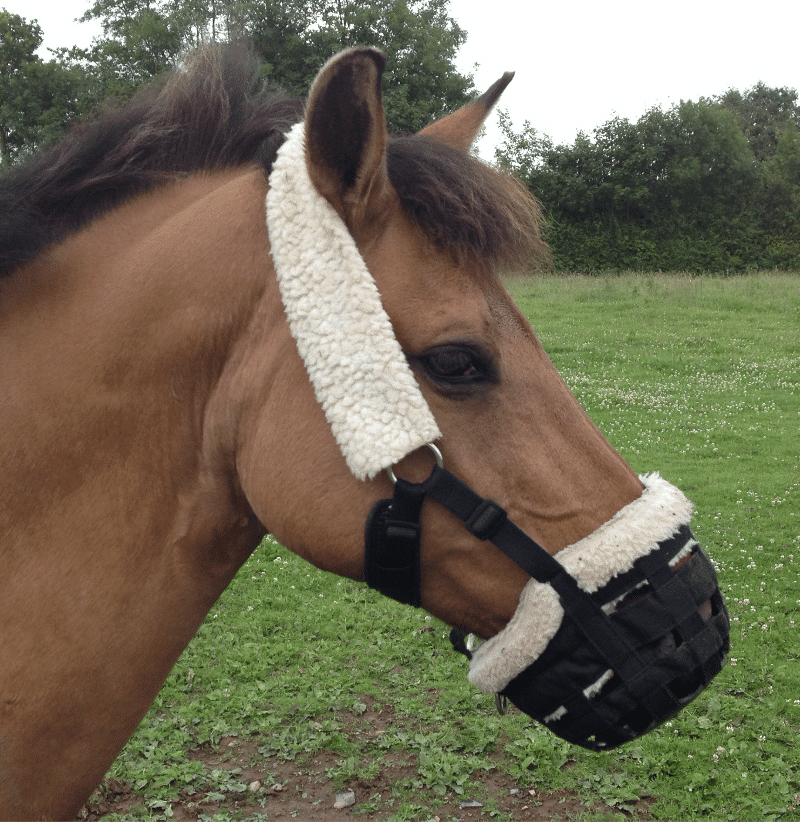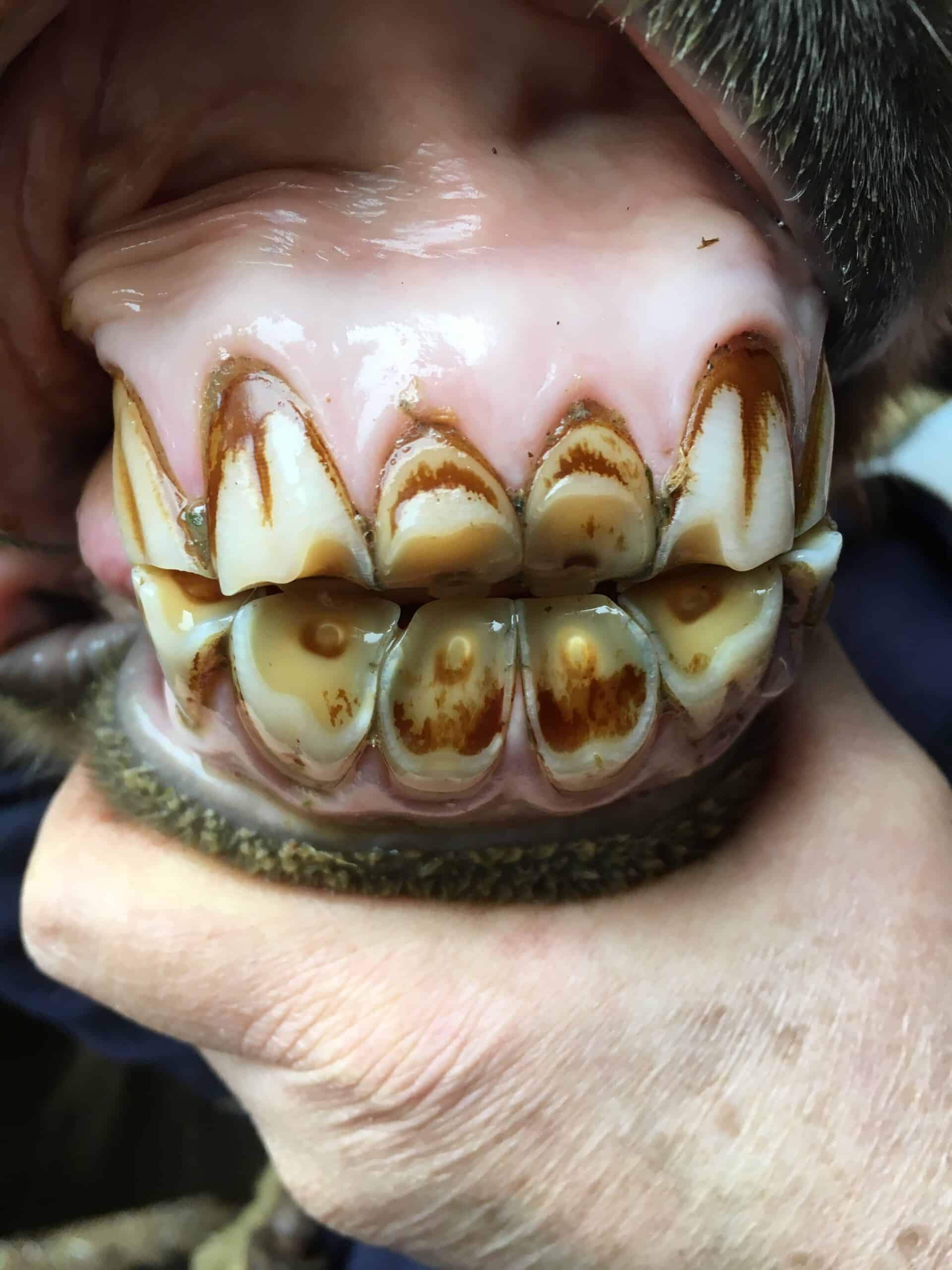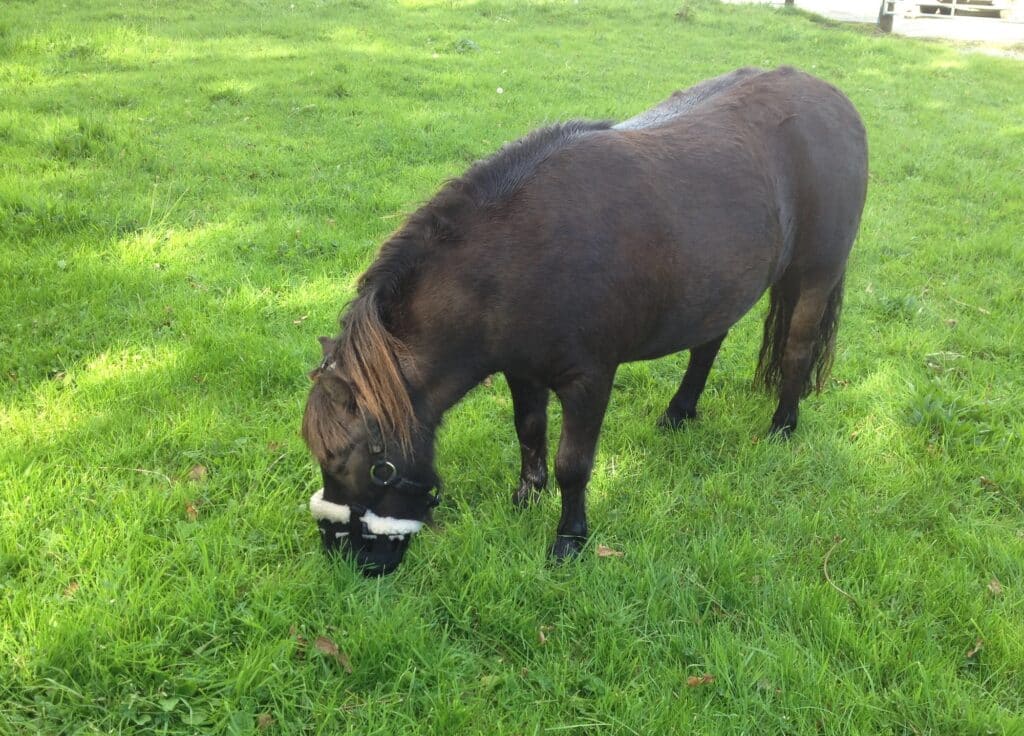Appetite & Feeding, Daily Management, Nutrition
Grazing muzzles – what you need to know
Dr Kieran O’Brien, MA MVB(Hons) PhD MRCVS, advises how to use a grazing muzzle correctly
Grazing muzzles have been shown to reduce grass intake by 50-80% and can be a very useful way to prevent ponies or horses gaining too much weight when grazing, to help obese animals lose weight, and to prevent laminitis. Muzzles allow bonded ponies to be kept together and interact socially, and they allow the pony to exercise by moving over a bigger area than if, for example, the paddock was strip grazed.
Introducing a muzzle
It is important that the muzzle is introduced gradually and the pony is trained properly and shown that it does not prevent all feeding or drinking. This is done by pushing grass or carrots through the grazing opening. Initially, ponies may show frustration when wearing the muzzle but most soon adapt after a few days. Care must be taken to ensure they also drink through the muzzle.
When fitted, make sure there is an inch (2.5cm) gap between the end of the muzzle and the pony’s face, and a gap of at least 2-3 fingers around the muzzle to allow chewing.

Muzzle management
It is recommended that muzzles should not be left on for more than 10-12 hours at a time. Once the muzzle is removed it is critically important that the pony is not returned to the paddock, as it has been shown that hungry ponies will then binge eat, which completely negates any beneficial effect of muzzling.
Where to graze
When a muzzle is fitted, the maximum grass length in your pony’s paddock should be four inches (10cm). Taller grass bends over when the muzzle is applied to it, preventing the pony from eating.
It is best to avoid very short grass because this causes the pony to graze very close to the ground. This can cause sand and dirt to be taken into the muzzle and can lead to wear of the incisor teeth if the muzzle is made from hard plastic material.

Above: Damage caused by incorrectly fitted grazing muzzles
Troubleshooting
Some ponies manage to remove their muzzles and it can be tricky to keep them on.
Trying the following can help:
- Plait the forelock and top of the mane and feed the muzzle strap through it.
- Fit a fly mask or a safety headcollar over the muzzle.
- Use rubber bands or elastic hair bands to keep the Velcro attachments snugly together.
- Ensure there is nothing in the paddock the pony can use to pull the muzzle off, for example a wheelbarrow.
- Use an electric fence to keep the pony away from fixed obstacles it might use to help pull the muzzle off.

When you remove the muzzle check carefully to see if any rubs are developing. At the very least, the muzzle should be padded around the nose, unless it is made of soft material.
Different options
The are many muzzle types now available, ranging from some very soft plastic ones to hard perforated plates that attach to a conventional headcollar. Some seem to suit certain ponies better than others, so don’t be afraid to experiment if you are unhappy with the one you first obtained.
Is it right for my pony?
There are issues to consider when introducing a muzzle. In addition to inhibiting normal grazing, a muzzle impedes a pony’s ability to groom itself and others. It can also affect herd dynamics by preventing the pony from signalling to others through facial expressions and mouth movements. However, if the pony adapts well to the muzzle and can wear it without any adverse effects (such as rubs), then arguably, if the only alternative is to allow the pony to graze indiscriminately and suffer the consequences of obesity and laminitis – which cause pain and suffering, and are potentially fatal – then the use of a muzzle can be justified.
